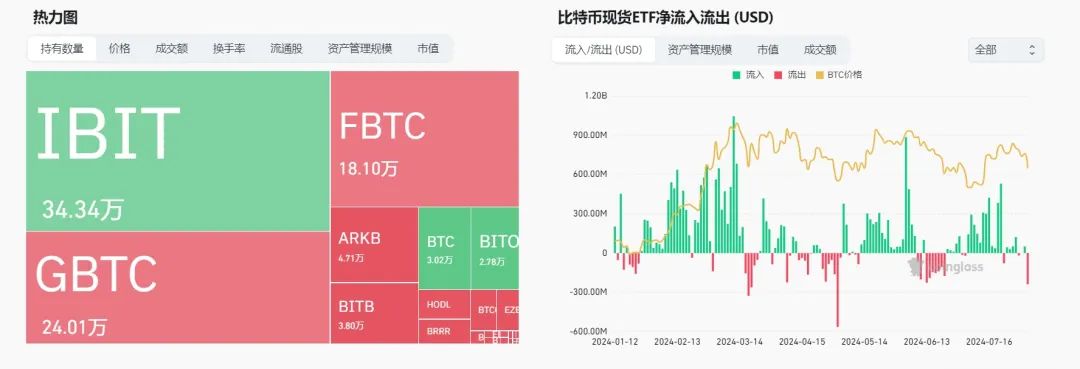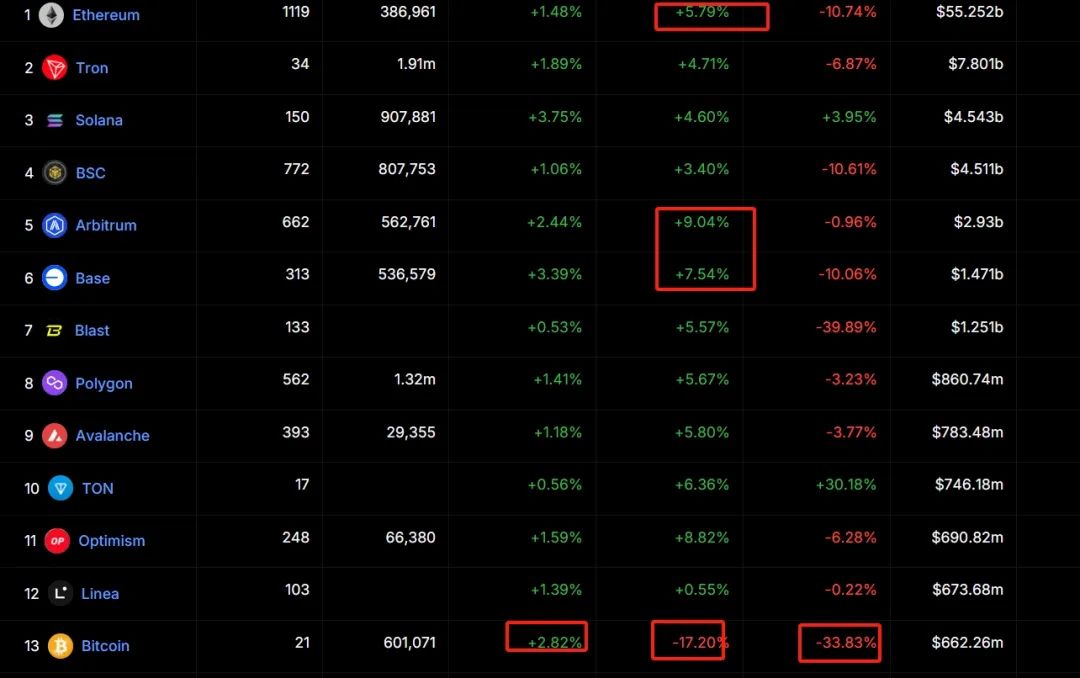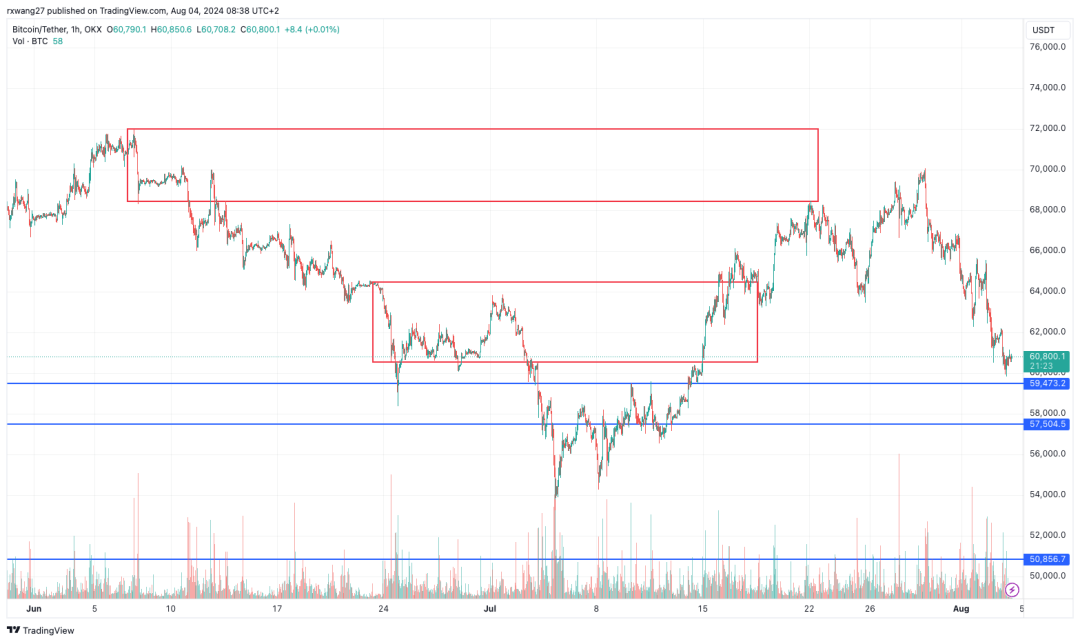The previous dehydrated viewpoint pointed out that Trump's trading was declining and the non-farm data was likely to be positive. However, the reality is that the non-farm data exceeded expectations and the unemployment data fell too much, triggering the Sam rule, leading the market to expect that the economy will enter a recession or even a severe recession. Affected by this, risk assets that were originally rotated under the expectation of interest rate cuts suddenly turned into trading recession expectations, and various funds fled.
At the same time, the selling pressure from Mentougou in the crypto industry has not been completely eliminated. On July 30, there was news that the Bitcoin controlled by the US government had unusual movements, which further suppressed market sentiment and caused a sharp drop in Bitcoin.
We believe that the current macro and internal conditions are unfavorable. Although a US economic recession cannot be confirmed for the time being, sentiment is difficult to adjust in a short period of time, and bearishness in the short term is inevitable.
01
Industry and Macro
Non-farm payrolls increased by 114,000 in July, the lowest since December 2020, far below the expected 175,000, and a sharp drop from the previous value of 206,000. The unemployment rate in July rose 0.2 percentage points from the previous month to 4.3%, the highest since October 2021, exceeding the expected 4.1%.
The U.S. unemployment rate surged 0.6% from its low point this year, triggering the Sam's rule for predicting recessions based on unemployment (if the unemployment rate rises 0.5 percentage points from last year's low, then a recession has begun). The market generally expects that the U.S. economy has already entered a recession.
Of course, the extent of the US economic recession has yet to be confirmed by further data. Risk markets usually fluctuate before and after a rate cut, but the magnitude of the fluctuation and the speed of recovery depend on the severity of the recession. The good news is that the non-farm data will undoubtedly further confirm the September rate hike, which may even increase to 50 basis points.
As far as the crypto industry is concerned, the selling pressure has not been completely relieved. Mt.Gox announced that on July 31, the trustee repaid some creditors in the form of Bitcoin and Bitcoin Cash through some designated crypto trading platforms according to the compensation plan. So far, more than 17,000 creditors have been repaid.
On August 1, an address marked as the US government transferred 29,800 BTC (worth $2 billion) to two new addresses 8 hours ago, transferring 10,000 and 19,800 BTC respectively.
02
On-chain data
According to coinglass data, Bitcoin ETF funds continue to see net inflows. From the trend point of view, the scale of fund inflows has greatly expanded after shrinking, and there are certain signs of strengthening of institutional bulls.

According to glassnode data, Bitcoin on-chain transaction fees continue to be sluggish, which indicates that Bitcoin on-chain activity is still relatively weak and market activity is relatively low.
According to Deflama data, the net inflow of funds in the Bitcoin ecosystem in the past month was -33.83%, and the net inflow of funds in the past week was -17.20%. Today, there was a certain net inflow of funds (2.82%), and the market sentiment has improved to a certain extent. This is mainly related to the end of the selling pressure from the German government. In addition, the market speculates that Trump's assassination has made funds optimistic about Bitcoin.

03
Technical Analysis
BTC retreated after coming under pressure from the resistance range above 68,000. This week, it experienced two important fundamental releases, FOMC and non-farm payrolls, and continued to move downward. From a price perspective, the support range is below 59,500. From the moment of the screenshot, the price may still move downward and gain support below to attack upward again; but even if it moves upward, the safe area can only be seen around 62,000. To move upward again, we need to wait for new funds to flow in.







